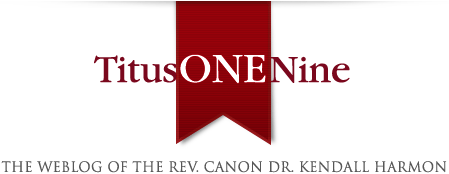So, how can we learn to live as wide-awake people, as Easter people? Here I have some bracing suggestion to make. I have to believe that many churches simply throw Easter away year by year; and I want to plead that we rethink how we do it so as to help each other, as a church and as individuals, to live what we profess.
For a start, consider Easter Day itself…Easter is about the wild delight of God’s creative power—…we ought to shout Alleluias instead of murmuring them; we should light every candle in the building instead of only some; we should give every man, woman, child, cat, dog, and mouse in the place a candle to hold; we should have a real bonfire; and we should splash water about as we renew our baptismal vows…It’s about the real Jesus coming out of the real tomb and getting God’s real new creation under way.
But my biggest problem starts on Easter Monday. I regard it as absurd and unjustifiable that we should spend forty days keeping Lent, pondering what it means, preaching about self-denial, being at least a little gloomy, and then bringing it all to a peak with Holy Week, which in turn climaxes in Maundy Thursday and Good Friday…and then, after a rather odd Holy Saturday, we have a single day of celebration.
…Easter week itself ought not to be the time when all the clergy sigh with relief and go on holiday. It ought to be an eight-day festival, with champagne served after morning prayer or even before, with lots of alleluias and extra hymns and spectacular anthems. Is it any wonder people find it hard to believe in the resurrection of Jesus if we don’t throw our hats in the air? Is it any wonder we find it hard to live the resurrection if we don’t do it exuberantly in our liturgies? Is it any wonder the world doesn’t take much notice if Easter is celebrated as simply the one-day happy ending tacked on to forty days of fasting and gloom?
…we should be taking steps to celebrate Easter in creative new ways: in art, literature, children’s games, poetry, music, dance, festivals, bells, special concerts, anything that comes to mind. This is our greatest festival. Take Christmas away, and in biblical terms you lose two chapters at the front of Matthew and Luke, nothing else. Take Easter away, and you don’t have a New Testament; you don’t have a Christianity; as Paul says, you are still in your sins…
…if Lent is a time to give things up, Easter ought to be a time to take things up….Christian holiness was never meant to be merely negative…. The forty days of the Easter season, until the ascension, ought to be a time to balance out Lent by taking something up, some new task or venture, something wholesome and fruitful and outgoing and self-giving. …if you really make a start on it, it might give you a sniff of new possibilities, new hopes, new ventures you never dreamed of. It might bring something of Easter into your innermost life. It might help you wake up in a whole new way. And that’s what Easter is all about.”
—Surprised by Hope: Rethinking Heaven, the Resurrection, and the Mission of the Church (New York: HarperCollins, 2008) pp. 255-257
Incredulity of Saint Thomas (1602)
by Caravaggio
Style: Baroque#art #painting #artoftheday #Caravaggio #Baroque pic.twitter.com/ZtAon56gP4— Art On Timeline (@ArtOnTimeline) April 13, 2023


 (@Youssefkchahin1)
(@Youssefkchahin1)  (@StroudStory)
(@StroudStory) 